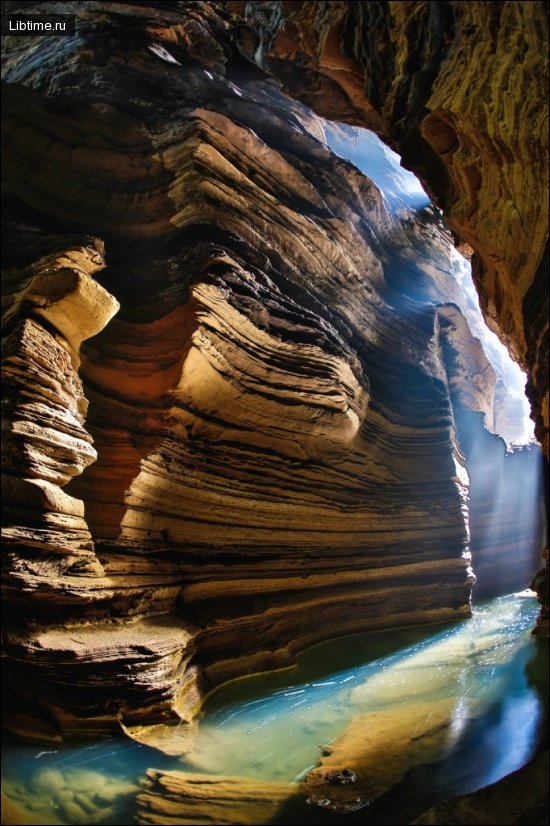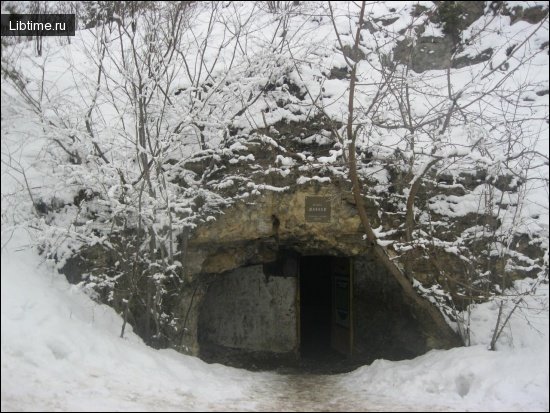Balagan Cave
Balaganskaya cave is located on the left bank of the Angara River, 10 km southwest of Balagansk. It was formed in gypsum and anhydrite of Cambrian age, containing interlayers of carbonate rocks.
The total length of the underground galleries of the cave, located at four hypsometric levels, is 1200 meters.
Grottoes and passages have predominantly northwest and northeast directions, which is due to the peculiarities of tectonic fracturing of rocks. 
The passages: 1 - first floor; 2 - second floor; 3 - third floor; 4 - basement floor.
The largest grotto Bolshoi, located at the level of the third floor, reaches 60 meters in length, 7 meters in width and 8 meters in height. By its structure, the cave belongs to the bag-like type, as most of it is located below the entrance.
This determines a strong hypothermia of the cave in winter and a wide spread of ice formations. The latter are represented by stalactites, stalagmites, crystals and cover ice.
Crystals are especially beautiful. They form hexagonal aggregates, usually with a spiral curl. There are also pyramidal spiral glasses, the base of which in some cases reaches 15 cm.
Crystals form most intensively in spring and summer, when they cover the walls and ceiling of the cave almost completely.
Stalactites and stalagmites are relatively small. Their length usually does not exceed 1 m, and their thickness is 0.15 m.
The thickness of the covering ice varies from 0.05 to 0.3 m. The air temperature in most parts of the cave varies from -1° to -4°. Only in some galleries of the third floor it is positive (2°,5). The total volume of the cave is 4800 m3, and the volume of the Big Grotto is about 2000 m3.


